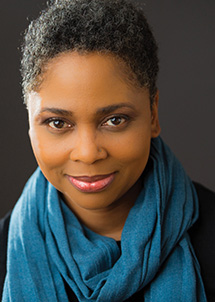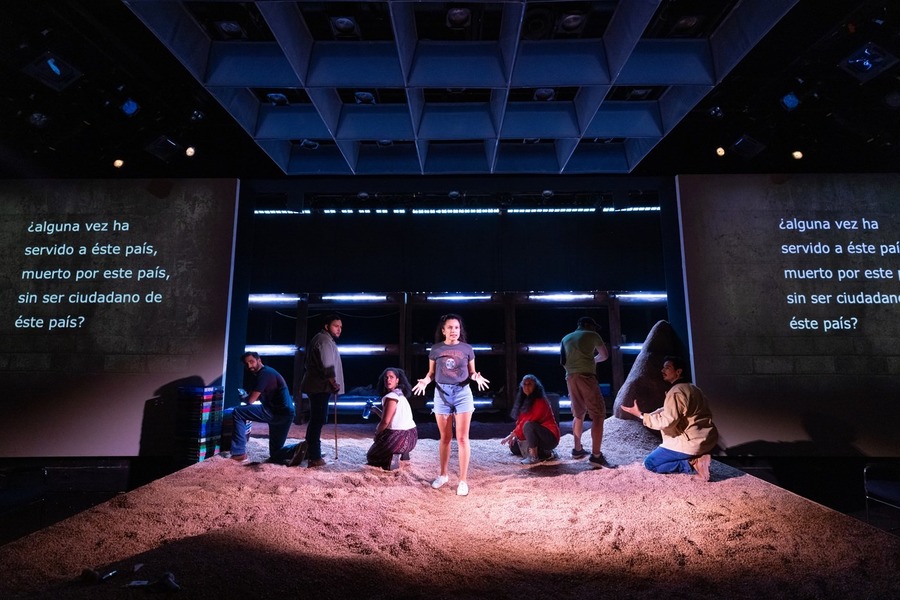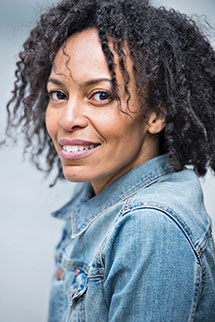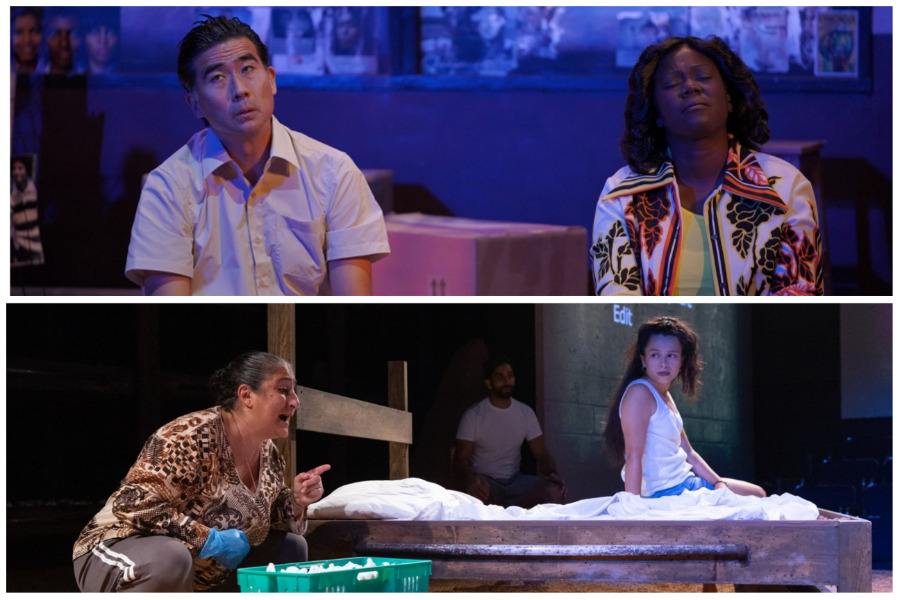It was at an afternoon session of the TCG Conference in Miami in 2019 titled “Leading the Cultural Change: Beyond Representation” that I saw Snehal Desai, artistic director of L.A.’s East West Players, gesture to his co-panelists—all of them, like him, theatre leaders of color from various racial and cultural backgrounds—and ask simply, “Where’s the play that looks like this?”
His point was that he, a South Asian man, counts among his friends and colleagues folks who are Black, East Asian, Indigenous, Latine, and mixed race, but that he’s seldom seen this kind of rainbow matter-of-factly represented onstage—including at his own theatre, which tends to present both original plays by Asian Americans rooted in and about their own cultures and revivals of musicals with all-Asian casts.
In context, I think Desai had in mind a kind of multi-culti Friends, or at least a play in which the cultural differences among the characters wouldn’t be the main driver of the drama. But his point stands even if you consider stage shows about intercultural relationships more broadly, whether conflictual or collegial. With the exception of plays about fraught dealings between Black and white folks, from Dutchman to Pass Over, the literature of plays about different people of color is conspicuously thin.

Hence East West Players’ new season, which will explore the relationship between African American and Asian American communities, and which kicks off this week with Inda Craig-Galván’s The Great Jheri Curl Debate (now though Oct. 9). A comic drama set in 1979, it’s about a Black woman, Veralynn, who takes a job in a South Side Chicago beauty supply shop run by a Korean man, Mr. Kim, with no knowledge of Black beauty products and even less interest in his customers’ lives. As is the way of such plays, each character is changed by the other, in what director Scarlett Kim called “not a romantic love story, but a kind of love story of two people being able to see each other for who they are, beyond the prescribed ideas of who they’re supposed to be or what they’re supposed to think about each other, which is all based on white assumptions about the rules these identities are supposed to play within the dominant culture.”
Playwright Craig-Galván, who was invited by Desai to join EWP’s writer’s group, based the play on her mother’s own experience.
“She was a hairdresser, a beautician, who, because the chemicals were starting to get to her, sought a job at a newly opened beauty supply store in our all-Black neighborhood,” Craig-Galván recalled. “The store was owned by a Korean immigrant, as most of them were. So the idea that we see in the play, where this man tells her, ‘I can’t pronounce your name, so I’m going to call you Julie’—that really happened. And for the rest of her life, everybody in our family, all of her friends, called her Julie. I always wondered what would make a woman allow a man who was just her boss to essentially change her name.”

That’s not the only source of conflict among the two leads in The Great Jheri Curl Debate. In addition to their disconnect over the very beauty products they sell, which Veralynn knows intimately but Mr. Kim does not, there is a deep-rooted mistrust between these two communities which has occasionally flared into riots and violence. At one point Mr. Kim alludes to a meeting of fellow Korean shop owners in which they share “tips” on how to handle their Black customers, including what type of gun to have on hand. And at another point he instructs Veralynn in what seems like a mystifying approach to customer service:
Be mean. Not always, not like my brother. Not like Young-suk. But just for a week here and a week there. Customers get put off, they stay away. Not always. But some. But then… they miss us. Walgreen’s doesn’t have what we have. And when the customers come back for what we have, then you act nice. Not funny-acting. They come back and come back and come back. Business picks up. In a few months, you act mean again. Business levels out. Business stays level. Doesn’t grow too quick. Don’t want that.
What Craig-Galván learned by doing research and talking to Korean American acquaintances and friends is that the rationale for this seemingly strange attitude, which fed stereotypes of brusque Koreans, was grounded in economic fear. Crediting the insights of a paper by Jackson State University’s Robert Mark Silverman, Craig-Galván said, “Their stores were being watched, and if they were making too much money and looking too successful, the rent would get raised. So they would intentionally try to drive away traffic by every once in a while treating customers poorly. Several of the people who were interviewed said that was their tactic for slowing business down so that their rents wouldn’t get raised.”
Another source of conflict for Veralynn is the very hair product alluded to in the title—an infamous wet-curl permanent wave for Black folks’ hair patented by a white entrepreneur, Robert William Redding, who at some point took on the inexplicable nickname Jheri, and who is embodied in the play by a huge in-store poster that comes to grinning life. Veralynn knows firsthand the damage that Jheri Curl chemicals can wreak on hair, and she also knows several homemade workarounds that are safer but aren’t available on her store’s shelves. She ultimately finds expression in Mr. Kim’s shop by making wigs in various styles—though not the Jheri Curl.
Shelia Dorn, who designed Veralynn’s wigs for the show as well as for a Black couple from another animated in-store poster, shares the lead character’s opinion. “I’m not a fan of the Jheri Curl,” said Dorn, who designs wigs primarily for theatre but also for film and TV. Still, some observers have forecast a comeback for the look once favored by Michael Jackson and Lionel Richie. “Some people still have a little curl, but it’s not as juicy,” said Dorn.
At the intersection of these two strands—concerns about Black beauty standards, and the conflict among Black folks and Korean Americans—is a lack of welcome. Mr. Kim feels unwelcome, not only as an Asian immigrant in white-dominated America, but also in a predominantly Black neighborhood where he feels mistrusted and resented. Veralynn is also made to feel doubly unwelcome, both by the mistrustful vibe in Mr. Kim’s store and by the very products on his shelves, which sell her a vision of how she should look that is not her own. That these two characters find and clear some ground together, despite the assumptions imposed on them from outside, is the kind of miracle you can’t put in a bottle.

Meanwhile, on the other side of the country, at People’s Light in Malvern, Pa., fresh ground is being harvested with Mushroom, an ambitious new play by Eisa Davis (playing now through Oct. 16) about the Mexican immigrants, many of them undocumented, who work picking 50 percent of the nation’s mushrooms in Kennett Square, in West Chester, Pa., and whose community was raided by ICE in 2017. Among the eight characters in Davis’s play, based on years of interviews she conducted with mushroom pickers and others in the region, is an immigrant with a pointedly different status: a South Asian tech worker named Natarajan, for whom one mushroom worker, Ignacio, is doing some renovations on the side, and who has begun a casual relationship with Edit, a Latina nurse whose mother, Lety, has worked in the mushroom “doubles” (a term for the houses in which the mushrooms are grown) since the two arrived from Mexico when Edit was 5.
That only hints at some of the complexity of Davis’s braided, bilingual narrative, in which conflicts among workers become entangled with broader labor and immigration concerns and a restorative justice process initiated by a mushroom worker and part-time activist, Rain, leads to uncomfortable revelations. Though there is also a white owner depicted in the play, like The Great Jheri Curl Debate, Mushroom is a play about non-white folks pressed together by the impersonal logic of white American capitalism, and seeking, out of necessity if not natural affinity, some kind of solidarity.

Mushroom grew out of People’s Light’s New Play Frontiers commissions, designed to create, as the official language has it, “new plays that explore our American identity inspired by stories and concerns in our region.” Davis has been working on this commission since 2013, and since then the play has swelled to something “kind of epic, kind of operatic.” The subject has dictated the form, she said: “It feels like a real microcosm of larger issues around interdependence, and who we are as the family of humankind.” It’s also a play in which, as Davis put it, “I’m writing it but it’s also writing me.”
Staged by director David Mendizábal, much of Mushroom invokes a kind of story circle, with an intermittent game of musical chairs intended to evoke “the metaphor of scarcity we’re taught that isn’t necessarily true,” Davis said. Indeed, for all its drama—and this play has some big, jaw-drop moments—this is also a teaching play.
“We need to learn more about where it is that our food comes from, just as we need to just understand more of the systems that keep us alive,” said Davis, who may be best known to many folks for her acting work, most recently in Mare of Easttown. The climate crisis is one aspect of that, but so is the labor dimension. It was a wakeup call for Davis, for instance, when she learned agricultural workers, documented or otherwise, are not covered under the U.S. Fair Labor Standards Act. “As an Equity actor, there are so many things I just take for granted, like having a first aid kit in the room, or having breaks, having overtime pay. You’re not entitled to any of that if you do agricultural work.” So Mushroom is about “where our food comes from, but also where the people come from who are picking this food, and how that that element of the ecosystem has to be respected and understood, as opposed to made into a convenient scapegoat and vessel for all of the rage and discontent that a lot of people who call themselves Americans have.”
This may all seem a long way from the multi-culti Friends image evoked by Snehal Desai’s comment. But among the hopes I have for U.S. theatres is that if they begin to stage the world as it actually is—i.e., majority non-white, and in all its colors and complications—we might have a chance of moving through these conflicts to a place of gathering and understanding. A place like the theatre, in fact.
Rob Weinert-Kendt (he/him) is the editor-in-chief of American Theatre. rwkendt@tcg.org


